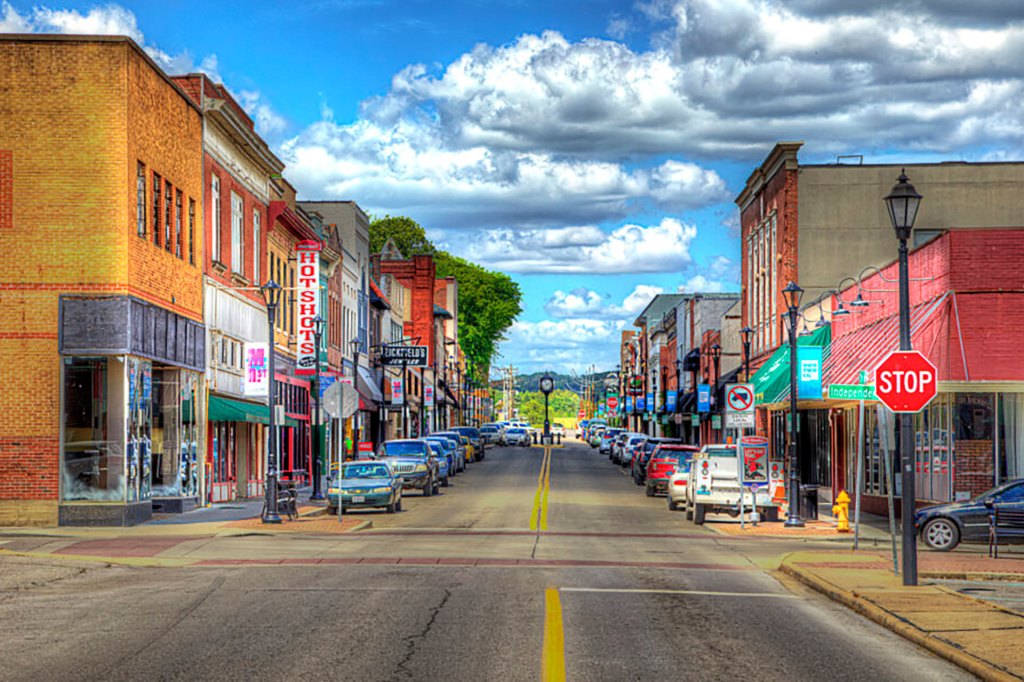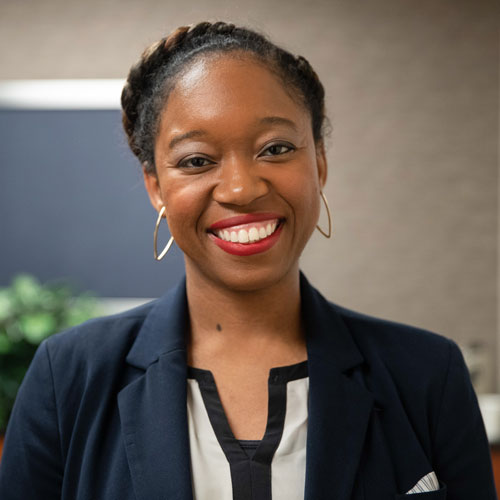This article originally appeared in the St. Louis Fed’s Open Vault publication and is republished with authors’ permission.
America’s rural areas and small towns are facing several demographic changes: Some are aging or shrinking as young people move away, and others are absorbing an influx of newer US residents.
What should rural communities consider as their populations shift? Community development experts at a Nov. 14-15, 2023 event in Cape Girardeau, Missouri weighed in on that question with data, ideas, and stories of revitalized communities.
Here are four key ingredients for recipes for rural success from the event, Investing in Rural Prosperity: Successful Approaches to Demographic Shifts:
- Data-informed thinking helps communities adapt to the interplay of economic and demographic conditions and shifts.
- Shifting to a mindset that recognizes both the benefits and unique opportunities new residents can bring is needed to advance inclusive rural development.
- When communities get guidance to appropriate programs, federal funds can be catalysts for community renewal and innovation opportunities.
- Look for the bright spots. While problems can take up a lot of public meeting time and struggles can consume headlines, success stories also abound.
Considering different rural population changes
Adapting to the interplay of economic and demographic conditions and shifts requires data-informed thinking that accounts for a complex picture of population changes in planning and development. For example, different combinations of factors can cause population loss.
Migration, births, and deaths all contribute to population changes, said John Green, a professor and the director of the Southern Rural Development Center at Mississippi State University. Reclassification—shifting the classification of areas from rural to “nonrural” due to population growth—also can contribute to a decrease in rural communities and should be considered.
US rural population trends
Green outlined “big picture” US rural population trends.
- “Natural decrease,” the combination of fewer births and more deaths, was exacerbated by higher death rates during the COVID-19 pandemic.
- Some rural areas gained population with “selective in-migration,” mainly due to people moving in after gaining the flexibility to work remotely.
- Some areas’ net in-migration (more people moving in than out) “has been almost solely from minority groups.”
Some counties with population losses have had both natural decrease and migration; others have had high birth rates but lost population with people moving out.
“The point is that it’s a more complex picture that we have to account for if we’re going to plan for rural development,” Green said.
Rural population in Mississippi Delta region states
In the Delta Regional Authority’s service area, nonmetro, or rural, counties were much more likely in the 10 years from 2010 to 2020 to have median net out-migration (more people moving out than in) than their metro counterparts, and also had higher age dependency ratios—the number of people younger than 15, and 65 and older, relative to the working age population. Higher numbers suggest greater pressure on the working age population, Green said.

Both types of counties had median rates of net out-migration that were negative for people in their 20s and late teens, and positive for people in their 30s, according to Green’s analysis. In other words, more people in college and early career years moved out than moved in, and more people farther along in their working years moved in than out.
“We can see the likely challenges faced by places with net out-migration of young adults being a major concern,” Green said. Digging deeper into population change and paying attention to net migration as a component is important for rural development, he said.
“Amplifying rural voices is where we can make important strides.”
Help moves in more than one direction
Rural leaders in the audience and on the panels talked about how one of the key ingredients to advance rural development is a shift in mindset to one that recognizes both the benefits and unique opportunities new residents can bring to building an inclusive economy.
Panelists Susan Montalvo-Gesser, director of Catholic Charities of the Owensboro, Kentucky diocese, and Christa Yoakum, a Lancaster County, Nebraska District 2 commissioner, have seen firsthand the contributions immigrants from other countries can make to rural communities by bringing their training and willingness to help.
Yoakum, who also is senior welcoming coordinator for immigrants and communities for Nebraska nonprofit Appleseed, gave the example of an immigrant from Mexico who worked on a hog farm in Nebraska before bringing his business background into play for his local community. For Montalvo-Gesser, a disaster brought a new resident’s contributions into sharp relief.
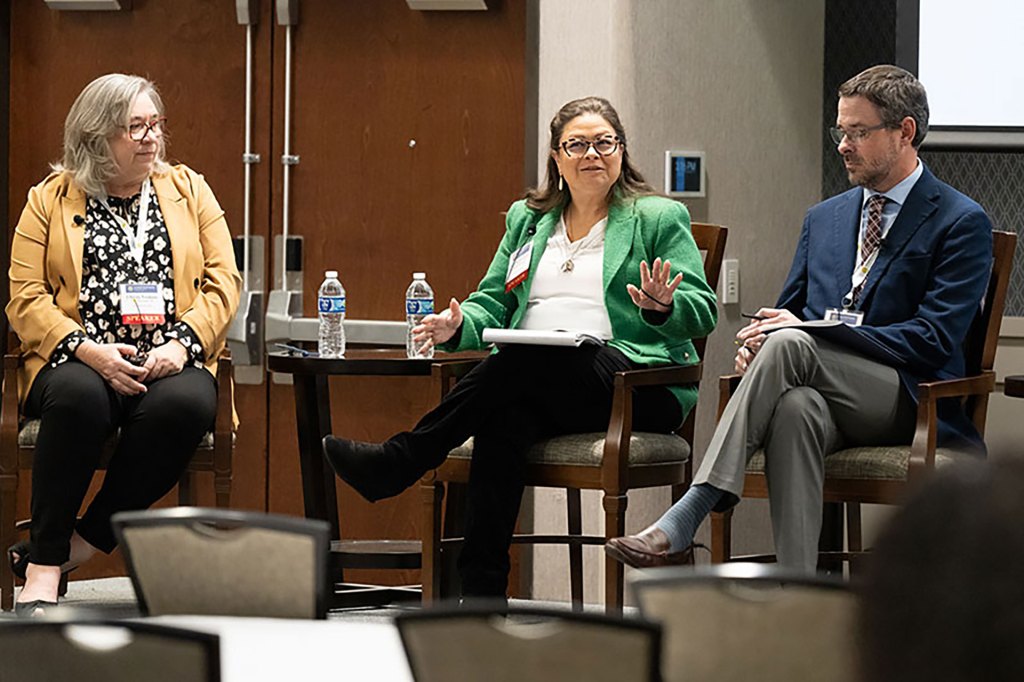
Settling in and giving back in Kentucky
The counties in western Kentucky that Montalvo-Gesser’s organization serves have added some residents through refugee resettlement.
Among those new residents were about 200 Afghans resettled in the area in November 2021, Montalvo-Gesser said. There was no permanent housing available, so they were placed in a hotel. Among them was Khaibar Shafaq, who had a background in international disaster relief, and volunteered to help get the other refugees settled.
Montalvo-Gesser, who is an immigration lawyer, started meeting with the refugees to help them with asylum status and other legal issues. But in December 2021, tornadoes tracked across part of Tennessee and 11 counties in western Kentucky. The tornadoes “wiped out a lot of our community,” Montalvo-Gesser said.
Montalvo-Gesser said she had to go to the hotel, apologize and tell Shafaq that the help on immigration had to be put on hold because her organization needed to deal with the aftermath of the tornadoes. Montalvo-Gesser said she was “really upset” and told Shafaq that she didn’t know where to begin. Shafaq, now a paralegal and case manager with Catholic Charities, stepped forward, she said, pointing to his disaster relief experience.
“‘I’ve worked for the International Red Cross for 16 years,’” Montalvo-Gesser quoted him as saying. “‘I’ve handled mudslides and earthquakes and war-ravaged areas. Give me an apron and show me where to go.’”
“And here we are,” Montalvo-Gesser said, “Smacked with these two sort of crises at the same time, and the people that I’m supposed to help come in to help me with our crisis of rebuilding western Kentucky.”
From hog farm work to business ownership
It’s important for leaders in a community to seek out and recognize the value of immigrants, Yoakum said. She gave the example of a man named Javier, an immigrant from Mexico with a business background who was living in a town of about 7,000 people and working at a hog farm.
He became involved in community activities at the time Yoakum was convening a circle of people of diverse ethnicities and from diverse sectors: development, education, business. Javier participated in some of the meetings, which included discussions about what people wanted for the community, and community leaders came to learn he had a background in city planning as well as business, Yoakum said. His degree didn’t transfer to the US, but he joined the community’s planning committee.
The planning committee participation didn’t improve his earnings, but it was fulfilling, Yoakum said—and the community benefited from what he knew. Javier now owns a restaurant, hotel, and bar in town. He is thriving and contributing to the community, Yoakum said.
“We fully believe that these partnerships like this are what drive our communities and drive integration,” she said.
Finding federal funding and innovation opportunities
There are more than 400 programs available to rural and tribal communities for economic and community development, yet accessing these programs can be a challenge. In a keynote address, Tony Pipa discussed obstacles to funding reaching rural communities, including the avenues by which funding is allocated at the state level or requirements that rural communities come up with matching funds.
Pipa, a senior fellow in the Center for Sustainable Development at the Brookings Institution, said that researchers at the institution have been analyzing provisions in three federal acts: the Infrastructure Investment and Jobs Act; the CHIPs and Science Act; and the Inflation Reduction Act.
The researchers reviewed these acts for programs directly or indirectly targeted to rural places. Programs included those that would work for rural places, had a preference or stipulation for rural areas, or had objectives—such as conservation efforts and broadband expansion—that meant most of the money would be spent in rural communities.
The researchers found $464 billion that could be used in rural areas.

“That’s not authorized only—that was money that was immediately made available through those bills. That has real significance and relevance for rural places.”
– Tony Pipa, senior fellow, Center for Sustainable Development at the Brookings Institution
Focusing on bright spots
Though rural areas have their struggles, there is positive change happening at the local level, Pipa said. “There are bright spots, and I think our focus ought to be what’s happening in those bright spots,” he said, including what’s going well, and how policy could better support it.
Pipa hosts a podcast, “Reimagine Rural,” that features “rural towns experiencing positive change.”
Among Pipa’s interviewees was Gloria Dickerson, whose efforts led to that kind of change. Dickerson is the founder and CEO of We2gether Creating Change, a nonprofit that has led a group of community leaders in Drew, Mississippi, and helped launch a grocery delivery service.
Attendees also pointed out their own success stories, with a contingent from Perryville, a Missouri town 30 minutes north of the Cape Girardeau conference location, touting the revival of their downtown, among other developments.
Ten years ago, the downtown vacancy rate was 35%, said City Administrator Brent Buerck. The city started turning the area around by issuing grants out of general revenue funds to businesses for façade improvements, and by placing select areas in a downtown TIF district. TIF, or tax increment financing, is a development financing tool that uses new or incremental tax revenue generated by a project after it’s complete.
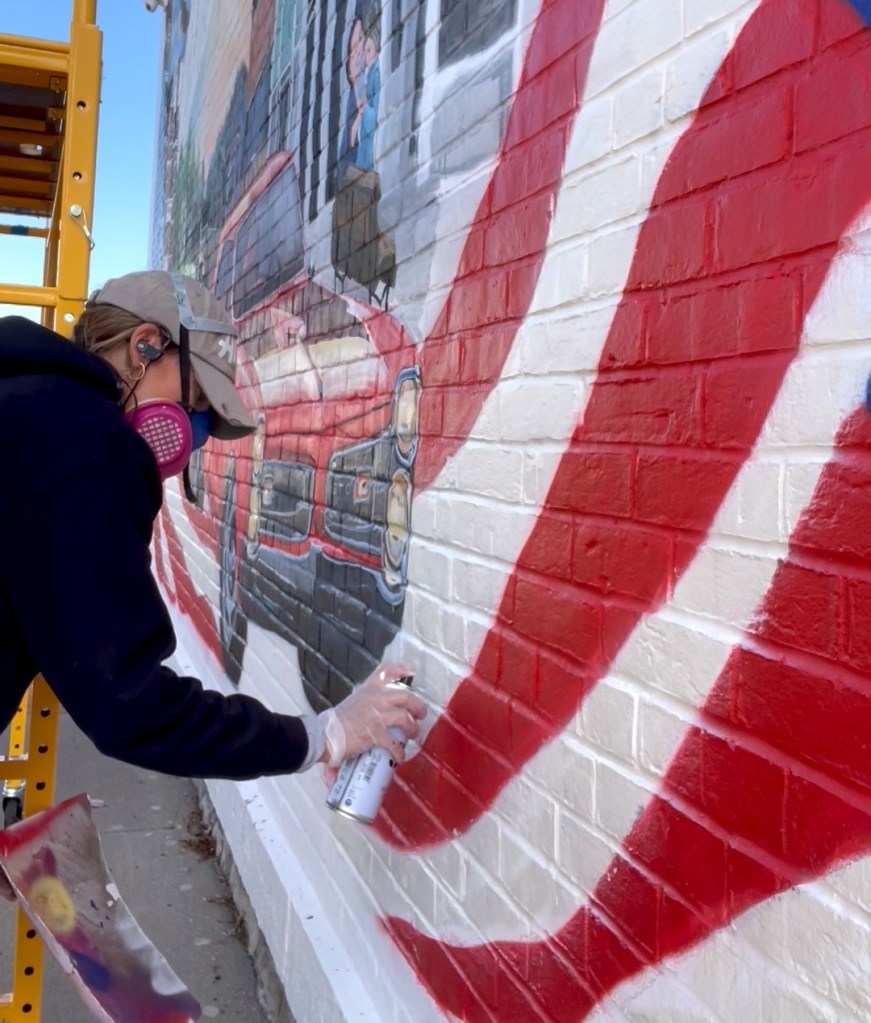
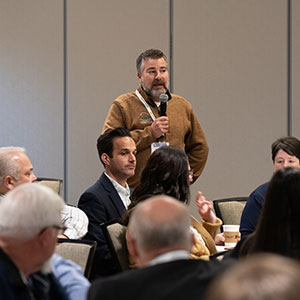
“We had to invest with people doing the development. We had to take a risk with them for them to take a risk with us.”
– Brent Buerck, Perryville, Missouri city administrator
Among the takeaways for conference attendees: Investing in rural prosperity takes more than financial support and assumes everyone has a role to play. Considering population and demographic trends, amplifying rural voices and listening with empathy allows “for us to tackle the problem, instead of tackling the person,” as Higher Purpose Founder and CEO Tim Lampkin said during a session on “Listening with Empathy.”
Attendees also learned that absent a rural development policy, there are programs and funding available to improve conditions in rural areas, and there are leaders who are working to change the narrative about an extractive rural economy to one about a generative rural economy: An economy in which all can thrive.
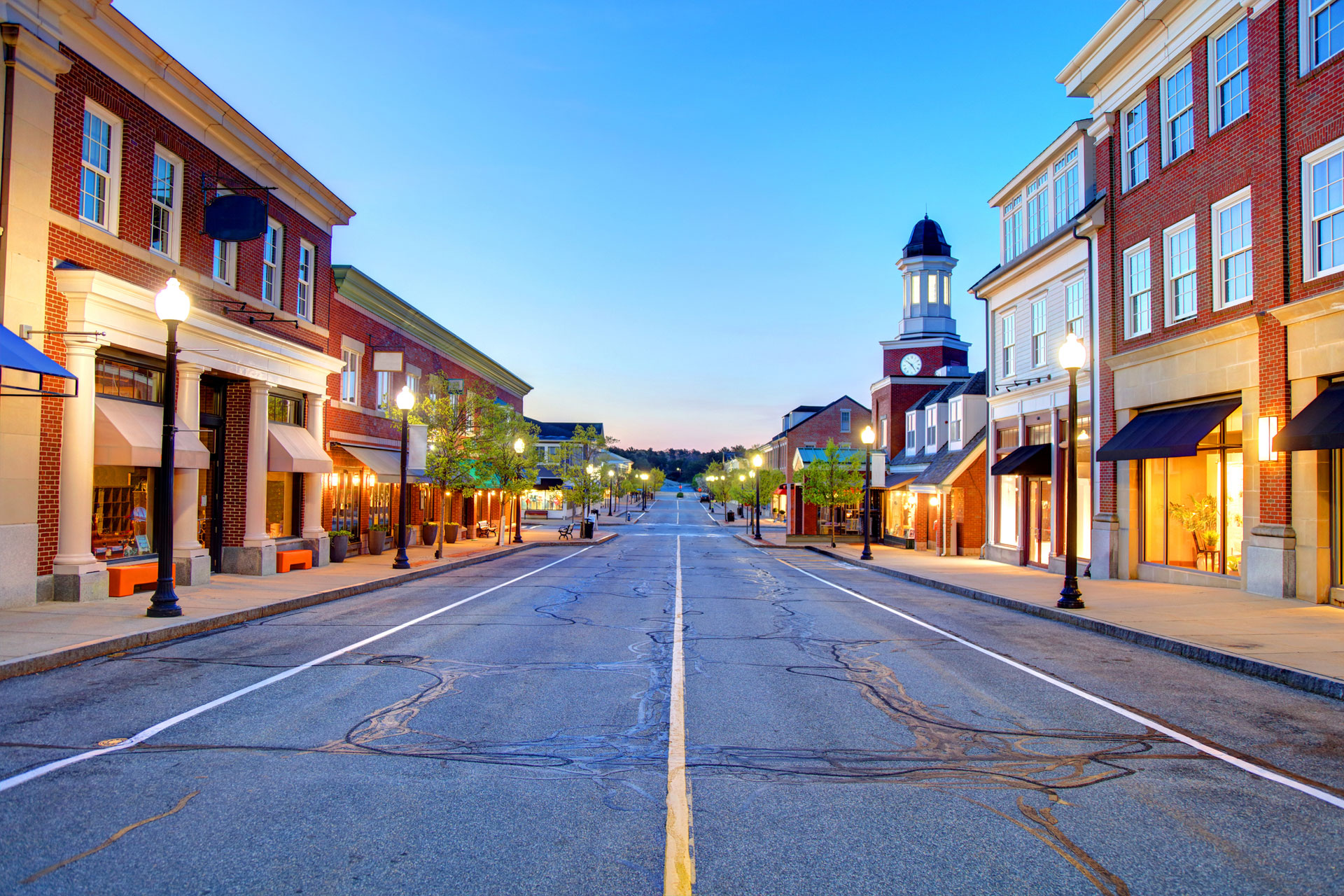
Transforming Rural America
In this series, “Rural America: A Treasure of Assets,” you’ll hear about the work of organizations and people who are passionate about where they live. You’ll hear about what they’re doing to develop high quality, affordable housing. They’ll also share how they’re bringing reliable internet services to remote areas and building systems to help communities create lasting change.

